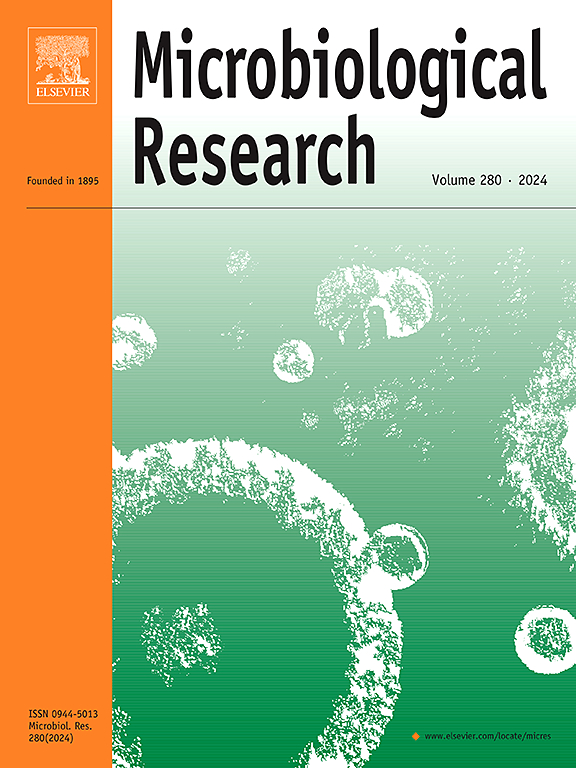Warm growing season activates microbial nutrient cycling to promote fertilizer nitrogen uptake by maize
IF 6.1
1区 生物学
Q1 MICROBIOLOGY
引用次数: 0
Abstract
The influence of nitrogen (N) inputs on soil microbial communities and N uptake by plants is well-documented. Seasonal variations further impact these microbial communities and their nutrient-cycling functions, particularly within multiple cropping systems. Nevertheless, the combined effects of N fertilization and growing seasons on soil microbial communities and plant N uptake remain ambiguous, thereby constraining our comprehension of the optimal growing season for maximizing crop production. In this study, we employed 15N isotope labeling, high-throughput sequencing, and quantitative polymerase chain reaction (qPCR) techniques to investigate the effects of two distinct growing seasons on microbial communities and maize 15N uptake ratios (15NUR). Our results showed that the warm growing season (26.6 °C) increased microbial diversity, reduced network complexity but enhanced stability, decreased microbial associations, and increased modularization compared to the cool growing season (23.1 °C). Additionally, the warm growing season favored oligotrophic species and increased the abundance of microbial guilds and functional genes related to N, phosphorus, and sulfur cycling. Furthermore, alterations in the characteristics of soil microbial keystone taxa were closely linked to variations in maize 15NUR. Overall, our findings demonstrate significant seasonal variations in soil microbial diversity and functioning, with maize exhibiting higher 15NUR during the warm growing season of the double cropping system.
温暖的生长季节激活微生物养分循环,促进玉米对肥料氮的吸收
氮(N)输入对土壤微生物群落和植物对氮的吸收的影响已得到充分证实。季节变化会进一步影响这些微生物群落及其养分循环功能,尤其是在多作物系统中。然而,氮肥施用和生长季节对土壤微生物群落和植物氮吸收的综合影响仍不明确,从而限制了我们对作物产量最大化的最佳生长季节的理解。在这项研究中,我们采用 15N 同位素标记、高通量测序和定量聚合酶链式反应(qPCR)技术,研究了两个不同生长季对微生物群落和玉米 15N 吸收比(15NUR)的影响。结果表明,与凉爽生长季(23.1 °C)相比,温暖生长季(26.6 °C)增加了微生物多样性,降低了网络复杂性,但增强了稳定性,减少了微生物关联,增加了模块化。此外,温暖的生长季有利于低营养物种,并增加了与氮、磷和硫循环相关的微生物行会和功能基因的丰度。此外,土壤微生物关键类群特征的改变与玉米 15NUR 的变化密切相关。总之,我们的研究结果表明,土壤微生物多样性和功能存在显著的季节性变化,在双季种植系统的温暖生长季节,玉米的 15NUR 较高。
本文章由计算机程序翻译,如有差异,请以英文原文为准。
求助全文
约1分钟内获得全文
求助全文
来源期刊

Microbiological research
生物-微生物学
CiteScore
10.90
自引率
6.00%
发文量
249
审稿时长
29 days
期刊介绍:
Microbiological Research is devoted to publishing reports on prokaryotic and eukaryotic microorganisms such as yeasts, fungi, bacteria, archaea, and protozoa. Research on interactions between pathogenic microorganisms and their environment or hosts are also covered.
 求助内容:
求助内容: 应助结果提醒方式:
应助结果提醒方式:


